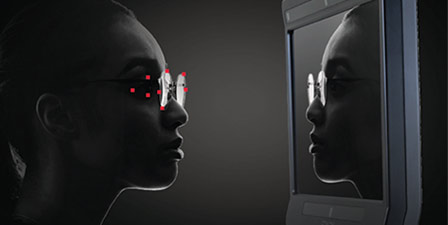L&T’s 2022 Premium Lens MarketPulse survey provides a valuable benchmark for independent eyecare practitioners. The survey results offer a quick and easy means for independents to gauge how their sales of spectacle lenses and treatments, as well as other dispensing criteria compare with their peers.
The data compiled here based on input from 262 independent optical retailers also illuminates how ECPs dispense certain lenses, such as digital progressive and single vision lenses that may require personalized measurements. Three year comparative data is included wherever possible to show how sales of various products are trending.
–Andrew Karp
TOTAL SALES
Compared to three years ago, 50 percent of retailers said that spectacle lenses and treatments made up a larger percentage of their location’s total gross dollar sales in 2021. In 2021, 57 percent said pricing on spectacle lenses and treatments has increased compared to three years ago as well, and 34 percent said that Rx sun lenses as a percentage of total dollar sales increased over the same period.
LENS SALES
When asked to rank lens design by popularity, standard or aspheric single vision was ranked most popular by 43 percent of retailers. Customized or personalized progressives were ranked most popular by 33 percent.
Slightly over one third of retailers (36 percent) said less than 3 percent of single vision Rxs sold are digitally enhanced. Two thirds of retailers (66 percent) said less than 3 percent of single vision digitally enhanced lenses use actual vertex, tilts and wrap measurements done in the office by the retailer.
Over half (57 percent) of retailers said that customized or personalized progressive lenses made up a greater proportion of their total lens sales in 2021 than they had versus three years ago, and half (50 percent) said computer/variable focus sales had increased over the last three years, while one third (33 percent) said that sales of bi/trifocals had decreased as a percentage of total lens sales over the last three years, respectively. Seventy-one percent prefer lens manufacturer brands over lab private labels for digital progressive lenses.
COMPUTER/OFFICE LENSES
Almost all retailers surveyed (93 percent) say they determine whether a patient should have computer lenses by their occupation/vocation as opposed to add power.
LENS MATERIALS
When asked to rank lens material by popularity, polycarbonate was ranked most popular by 48 percent of the retailers. Standard plastic was ranked second most popular by 27 percent. Glass was ranked least popular by the most retailers (48 percent).
Forty percent of retailers said that their 2021 polycarbonate lens sales increased as a proportion of total lens pair sales compared to one year ago. Thirty-nine percent and 36 percent said the same about their super high-index and Trivex lenses, respectively.
Sixty-five percent said that their mid-index lens sales had stayed flat. Glass was the weakest with 34 percent saying that glass made up a smaller proportion of their total lens sales in 2021 than last year.
LENS TREATMENTS
An average of 45 percent of clear blue light filtering lenses are AR blue filter. Eighteen percent are lens substrate (in-resin); 31 percent are combinations of AR blue filter and lens substrate (in-resin).
PERSONALIZED PROGRESSIVES
Retailers said that 46 percent of their progressive lens sales are personalized/compensated, on average.
Twenty-one percent of the progressive lenses with personalized/compensated designs include actual vertex, tilt and wrap measurements.
Over half (60 percent) use the manufacturer’s or lab’s default measurements for position of wear (vertex, panto and wrap).
DIGITAL MEASURING DEVICES
Thirty-three percent of retailers said that they have a digital measuring device in their office to take position of wear measurements. Among them, 42 percent say they use it 75 percent to 100 percent of the time.
LENS PACKAGES
Forty-nine percent of retailers said they use package pricing. Seventy-three percent offer premium, mid-range and value package pricing. The average price of a lens-only package was $272.43. The most popular feature to include in a lens package is 100 percent UV (57 percent).
OUTDOOR EYEWEAR
Sixty-four percent said they have increased discussions with their patients on the importance of UV and HEV blue light absorbing eyewear for outdoor use, and 55 percent have actually written more Rxs for them in the last three years.
METHODOLOGY
This sample was derived from the proprietary Jobson Optical Research database. This survey was conducted by Jobson Optical Research’s in-house research staff. Data collection was conducted in February 2022. ECPs were asked about 2021 sales and performance. Only the responses of independent optical retailers are included in the report. This year’s sample consists of 262 independent optical retailers. All participants were recruited by email, and the questionnaire was completed online. Four years of data is provided for comparisons where possible.
—Jennifer Waller, Director of Research and Business Analytics




























